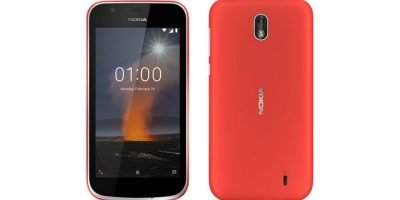
Qualcomm unveiled a mid-tier processor designed to deliver improvements in battery life, graphics and compute performance, imaging and LTE connectivity, as well as new technologies focused on wearables and fingerprint scanning.
To date, more than 1,900 designs have been launched or are in the pipeline using Qualcomm’s Snapdragon 400 processor line. The new Snapdragon 450 is expected to be available for commercial sampling in Q3, with availability in consumer devices before the end of 2017.
Snapdragon 450 silicon offers a higher performing octacore ARM Cortex A53 processor, delivering 25 per cent increase in compute performance over its predecessor, with an integrated Qualcomm Adreno graphics processor delivering a 25 per cent increase in performance over Snapdragon 435.
Power management improvements result in up to four additional hours of usage time, as well as a 30 per cent reduction in power when gaming. It also includes Quick Charge 3.0 support, which can charge a typical smartphone from zero to 80 per cent in around 35 minutes.
The platform is also the first in the tier to support real-time Bokeh effects. It also includes support for dual cameras at 13MP+13MP or a single camera at up to 21MP; hybrid autofocus; and 1080p video capture and playback at 60fps, enabling slow motion capture. It supports full HD displays.
Snapdragon 450 also includes the Snapdragon X9 LTE modem, which supports 2x20MHz carrier aggregation in both downlink and uplink, for peak speeds of 300Mb/s and 150Mb/s respectively. It is also the first in its tier to support USB 3.0.
Wearables update
Also unveiled was Qualcomm’s new Snapdragon Wear 1200 platform, which supports IoT technologies built on LTE to enable “ new generation of ultra-low power, highly energy efficient, always connected, and cost-efficient experiences to targeted purpose wearable devices such as kid, pet, elderly, and fitness trackers”.
Snapdragon Wear 1200 supports LTE M1 and NB-IoT to enable connected wearables which do not rely on smartphones for internet connectivity. It also includes positioning technology and an application processor for Linux and ThreadX applications.
Snapdragon Wear 1200 is commercially available, and shipping today. Original design manufacturers (ODMs) Borqs and Quanta have developed reference platforms based on the new silicon.
Qualcomm said that since its entry into the wearables market less than three years ago, more than 150 devices have adopted its technology, with 80 per cent of Android Wear announced or launched smartphones using Snapdragon Wear.
Fingerprint tech
Finally, Qualcomm touted “next generation ultrasonic” fingerprint sensors, which bring “new and enhanced” features to its previous generation of sensors.
This includes the ability to scan prints through OLED screens, removing the need for dedicated fingerprint scanners and instead using the displays for input. Also available are sensors which can work through glass and aluminium, enabling other parts of the body to be used for input.
[“Source-mobileworldlive”]

